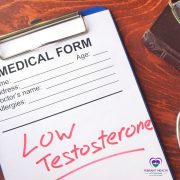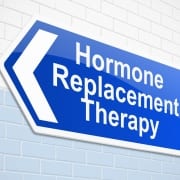Symptoms and Treatments for Low-Testosterone
Maybe you’ve heard the term “Low-T” but are you really familiar with what it is? Understand the symptoms and treatments for low testosterone. If your sizzle has started to fizzle, your energy is in the gutter, or you’re experiencing noticeable changes physically, mentally, and emotionally, it could be low testosterone, commonly referred to as “Low-T.” Up to 40% of men over age 45 may be experiencing the symptoms of low testosterone. Our clinicians take a comprehensive approach to all men’s health, evaluating your symptoms and looking for the root causes so we can treat the problem at the source, not only the symptom. Read on to become familiar with the range of symptoms related to Low-T so you can discuss your symptoms with your doctor to determine if they are a result of low testosterone or another health issue. Below is a list of symptoms and treatment for low testosterone along with answers to frequently asked questions.
Symptoms of Low Testosterone
As you can see from the list below, there is a wide range of symptoms related to Low-T, and having one or some of these symptoms is not a confirmation of low testosterone. Many of the symptoms are also present in a variety of other health problems such as high blood pressure, anxiety, heart problems, and more. That’s why it is so important to review all symptoms with your doctor.
- Low sex drive
- Difficulty with erection
- Fatigue
- Irritability and moodiness
- Loss of body hair
- Loss of muscle mass or strength
- Loss of bone mass (osteoporosis, brittle bones)
- Brain fog – difficulty with concentration or memory
- Increased body fat (breast development, also called gynecomastia)
- Mild anemia, low blood counts
- Depression
- Smaller testicles
- Infertility
- Delayed puberty (in boys)
Is ED, erectile dysfunction, the same as low-t?
No. While ED is a symptom of Low-T, it is also a symptom of many other health problems including cardiovascular disease, diabetes, hypertension, and sleep disorders among others. It’s important to discuss all of your symptoms with your healthcare provider to obtain the right diagnosis and treatment plan. Learn more about ED here.
How is Low-T diagnosed?
Testosterone levels are measured using a blood test to determine the level of testosterone present in the bloodstream. Your doctor may order multiple tests to obtain a more accurate measure since testosterone levels vary throughout the day. Levels are at their highest early in the morning. Learn more about testosterone levels testing.
What are the treatments for Low-T?
Low-T is treated using testosterone replacement therapy, available in multiple forms including injections, gels, patches, testosterone pellets, and dissolving, sublingual tablets. Not all cases of low testosterone require treatment. Your doctor will help you determine if, and what, treatment option is right for you.
What are the pros and cons of testosterone replacement therapy?
Pros: Patients undergoing testosterone replacement therapy might experience improvements in sexual function, bone density, muscle strength, energy, mood, mental alertness, and fat loss.
Cons: The most common side effect of testosterone replacement therapy are acne or oily skin, developing or worsening sleep apnea, enlarged prostate, and fluid retention.
How can you determine the right treatment option for you?
At Vibrant Health of Colorado, we listen to your concerns, evaluate your medical history and do a thorough exam to look for any and all root causes for your health issues. This allows us to advise on the best treatment options to meet your needs and your lifestyle. Schedule your consultation today and let’s get you back to feeling and living your best life.










